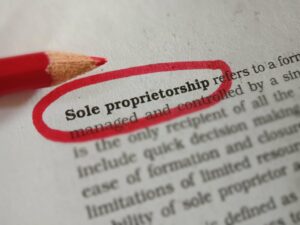Effective engagement letters are a great way for companies and clients to reach an agreement and protect themselves. When you’re entering into an agreement between a client and a company, you want to make sure that you’re protected from any potential mishaps or misunderstandings. We’ve collected a number of sample engagement letters from various countries that practices are using with their clients.
- This section should also include any penalties or fees that will be incurred if the deadlines are not met.
- It provides clarity on roles, responsibilities, and timelines, and ensures that you’re on the same page.
- In most cases, one party will be the client, and the other party will be the business.
- While nobody likes to contemplate ending an engagement before work is complete, it can and does occur.
- To help you protect yourself and mitigate risk, these eight critical elements should be included in every engagement letter.
- Include details from communication standards to costs to what services the relationship may include.
An engagement letter is a legally binding contract between a client and a professional service provider, such as a lawyer, accountant, or consultant. It outlines the terms and conditions of the services to be provided, including the scope of work, fees, and timeline. At its core, an engagement letter is a formal document used primarily by a variety of professionals, including accountants, lawyers, consultants, and other service providers. It outlines the scope of work and the terms and conditions of the services to be provided. Ultimately, the engagement letter serves as an agreement between the service provider and the client.
Fees
Make a list of the duties you can carry out to successfully manage their services. Setting standards for work performance is the aim of this section of the document. You, as the party submitting the product, can decide how to structure your strategy to satisfy the client’s requirements. The company’s employees can approve the tasks that will allow them to get the desired outcome. The section of the engagement letter can also acknowledge that you might need to finish your obligations before you get paid. Your engagement letter should include details about your fee structure, payment schedule, accepted payment methods, late payment terms (if applicable), and potential additional charges.
- Fortunately, it’s never been easier to create an engagement letter from scratch.
- Doing so will give both parties the chance to re-familiarize themselves with its contents and identify if any modifications are necessary.
- So, make sure to include a statement in your engagement letter that notes you may withdraw from the engagement at any time without completing the services.
- An accounting engagement letter should include all the information referenced above and will also typically have a timeline within which the work should be carried out.
- Engagement letters need to be presented to the client at the beginning of the relationship before work commences.
It outlines the fee structure, responsibilities and obligations of the firm and the client. Clio Grow’s client intake automation features can help law firms further streamline the process, making it easy to send out engagement letters quickly and correctly to clients. While it’s important to be specific and provide detail, avoid unnecessary legal jargon. Keep the letter succinct when possible to ensure it’s as straightforward as possible for clients. When writing an engagement letter, it’s also a good idea to clearly identify, explain, and urge clients to consider any and all potential conflicts that could come up during the lawyer-client relationship.
What types of businesses use this document?
Information regarding the BOI reporting requirements can be found at fincen.gov/boi. Consider consulting with legal counsel if you have questions regarding the applicability of the CTA’s reporting requirements and issues surrounding the collection of relevant ownership information. In doing so, we reduce the amount of time you spend on generating such a document, but also ensure that it is accurate and reliable so as to provide you with solid legal protection should you need it. An accounting engagement letter should include all the information referenced above and will also typically have a timeline within which the work should be carried out.
FAQs on Engagement Letter
However, they also share some important traits, such as being legally binding and designed to reduce liability. If the relationship is long-term, many companies require their engagement letter to be updated and signed again by the client annually. The CTA is new, and how the CTA fits within the existing interpretation of the practice of public accountancy is unclear.
ways engagement letters can improve your US tax season
The specific service section would typically also include deadlines and the fee structure. Engagement letters set expectations for both the client and the party providing the service, it specifies the exact service or task to be performed by the firm and the information to be provided by the client. All engagement letters also generally contain various deadlines for each sub-task. An engagement letter is a document that one party sends to another which details what an agreement may look like for both parties.
What is an engagement letter?
Would an individual client ever agree to have their car fixed without first understanding and approving the work to be done? In today’s business climate, having a mutual understanding between the parties to a service is expected. In this article, we will explore the purpose and importance of engagement letters, the key elements that should be included in the letter, and the benefits of using engagement nnpc publishes 2020 audited financial statements letters in professional services. Whether you are a client or a service provider, understanding the role of engagement letters can help ensure a successful and mutually beneficial engagement. A letter of engagement describes the business and personal ties that bind two people together. The client who receives the product is one party, and the supplier of the good or service is another.
By putting your best foot forward with a well-crafted letter of engagement, you can start setting client expectations, and building trust and loyalty. An engagement letter is a written agreement between a company and a client. It describes the business relationship that is to be entered into between these two parties.







